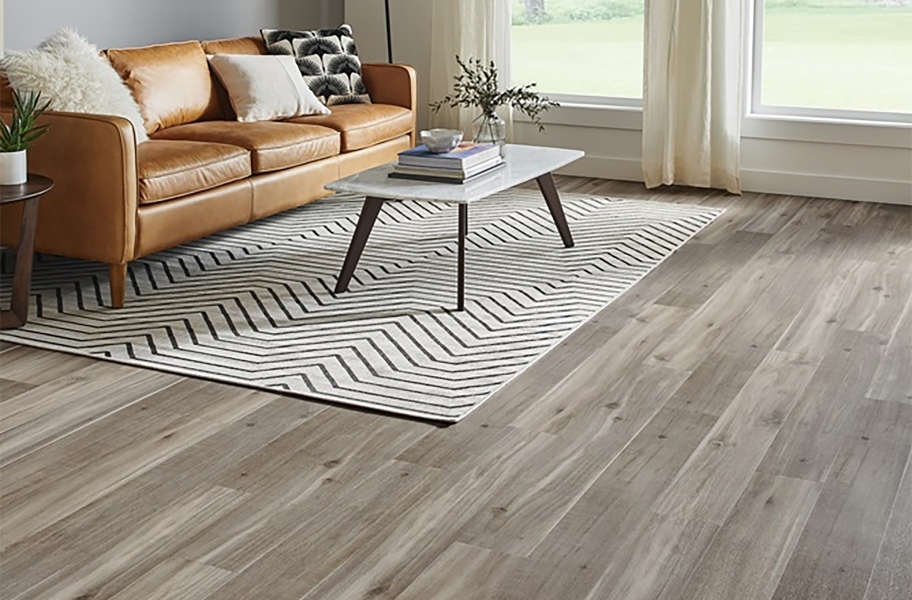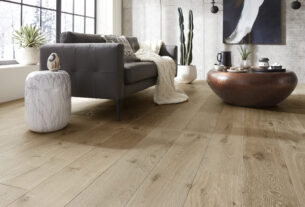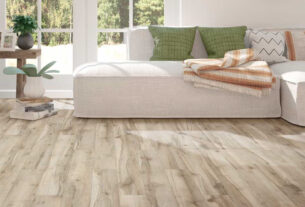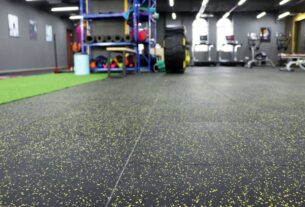Vinyl flooring is an excellent choice for homeowners and businesses alike due to its durability, affordability, and versatility. Whether you’ve recently installed Vinyl flooring Dubai or are considering it for your next renovation project, one key concern you may have is how to maintain and clean it to ensure it lasts for years while retaining its beautiful shine. Thankfully, vinyl floors are relatively low-maintenance, but like all flooring options, they do require regular care and attention to keep them looking their best. This blog will walk you through practical cleaning tips and maintenance advice for ensuring your vinyl flooring stays pristine and continues to enhance your home or office for years to come.
Understand the Different Types of Vinyl Flooring
Before diving into maintenance and cleaning, it’s essential to understand the different types of vinyl flooring. Broadly, vinyl flooring comes in two forms: vinyl sheets and vinyl planks or tiles (Luxury Vinyl Tiles – LVT). While the care requirements for these options are similar, there can be slight differences depending on the product’s finish.
- Vinyl Sheets: These come in large, continuous rolls and are known for their water-resistant properties, making them an excellent choice for wet areas like bathrooms and kitchens.
- Vinyl Planks/Tiles (LVT): These are individual pieces designed to mimic natural wood or stone. They are highly durable and often feature a protective topcoat that adds an extra layer of scratch resistance.
No matter which type of vinyl flooring you have, regular care will keep it looking great.
Sweep and Dust Regularly
One of the simplest and most effective ways to keep your vinyl flooring looking fresh is to sweep and dust it regularly. Dirt, dust, and small debris can accumulate over time and cause scratches if left on the surface. By using a soft broom or microfiber dust mop, you can remove particles before they cause any damage.
For areas with heavy foot traffic, make it a habit to sweep or dust your vinyl floors at least twice a week. This will prevent buildup and maintain the shine. Microfiber mops are particularly effective because they pick up dust without scratching the surface.
Mop with the Right Cleaner
While vinyl floors are durable and water-resistant, they still need a gentle cleaning routine. Using harsh chemicals can strip the floor’s finish or leave a residue that diminishes the floor’s shine. The best way to clean vinyl flooring is with a mixture of warm water and a mild floor cleaner. If you don’t have a commercial vinyl cleaner on hand, a solution of a few drops of dish soap mixed with water can work just as well.
- Avoid Abrasive Cleaners: Stay away from abrasive scrubbing pads, as these can scratch the surface of the vinyl. Instead, use a soft microfiber mop or a sponge mop.
- Spot Clean Spills Immediately: If any food or liquid spills, clean it up as soon as possible to prevent stains. A damp cloth should do the trick for most spills.
For a deeper clean, use a vinyl floor cleaner that is specifically formulated for your type of floor. Follow the manufacturer’s instructions for the best results.
Deep Clean Periodically
Even with regular sweeping and mopping, your vinyl floor will benefit from a deep cleaning every few months. Here’s a step-by-step guide to deep cleaning vinyl floors:
Remove Furniture: Start by removing any furniture or obstacles from the room to ensure you have full access to the floor.
Vacuum First: Before mopping, use a vacuum cleaner with a soft brush attachment to remove all dirt and dust. Be sure to go over the corners and edges of the room where dust tends to accumulate.
Use a Cleaning Solution: For a deeper clean, add a small amount of white vinegar to your cleaning solution. Mix one cup of vinegar with a gallon of warm water. Vinegar acts as a natural disinfectant and helps cut through any grime that might be stuck to the floor.
Mop the Floor: Mop the floor with the solution, starting from one end of the room and working your way towards the exit to avoid stepping on the freshly cleaned floor.
Afterward, ensure the floor is completely dry to avoid any water damage or streaks.
Prevent Scratches and Damage
Although vinyl is one of the most durable flooring options, it’s still prone to scratches, especially in high-traffic areas. Here’s how you can prevent damage:
- Use Felt Pads on Furniture: Place felt pads under the legs of chairs, tables, and other furniture to protect the floor from scratches. This is especially important in dining and living room areas where furniture moves frequently.
- Avoid High Heels and Heavy Objects: High heels and heavy furniture can dent vinyl flooring over time. Be mindful of this, particularly in entryways and hallways.
- Use Rugs and Mats: Place rugs or mats in high-traffic areas such as entryways and kitchen floors. This will help catch dirt and prevent excessive wear on the vinyl.
Protect from Sun Damage
Vinyl floors are resistant to moisture, but excessive exposure to direct sunlight can cause fading over time. To protect your flooring, consider using UV-blocking window treatments like blinds or curtains. If you’re placing a rug in a sunny spot, make sure to rotate it occasionally to prevent uneven fading.
Reseal When Necessary
Some types of vinyl flooring, especially luxury vinyl tiles (LVT), come with a protective coating that keeps the surface glossy and resistant to stains and scratches. Over time, this protective layer may wear off, and the floor may require resealing.
Check the manufacturer’s instructions to determine when to reseal your vinyl flooring. Typically, high-traffic areas may require resealing every 2-3 years. A fresh layer of sealant will restore the floor’s appearance and provide added protection.
Remove Stubborn Stains
If you encounter a stubborn stain, use a small amount of baking soda mixed with water to create a paste. Apply it to the stain and scrub gently with a soft brush. Avoid using harsh scrubbing tools, as this can damage the vinyl surface.
For tougher stains, consider using a commercial vinyl stain remover or rubbing alcohol, but be sure to follow the manufacturer’s instructions.
Conclusion
With a little regular care and attention, vinyl flooring Dubai can stay looking fresh and beautiful for years. By following these simple cleaning and maintenance tips—such as regular sweeping, mopping with a mild cleaner, and protecting against damage—you’ll ensure that your vinyl floors continue to enhance your home or office with lasting elegance and shine. With the right maintenance, vinyl flooring remains a smart, low-maintenance, and long-lasting option for any space.





